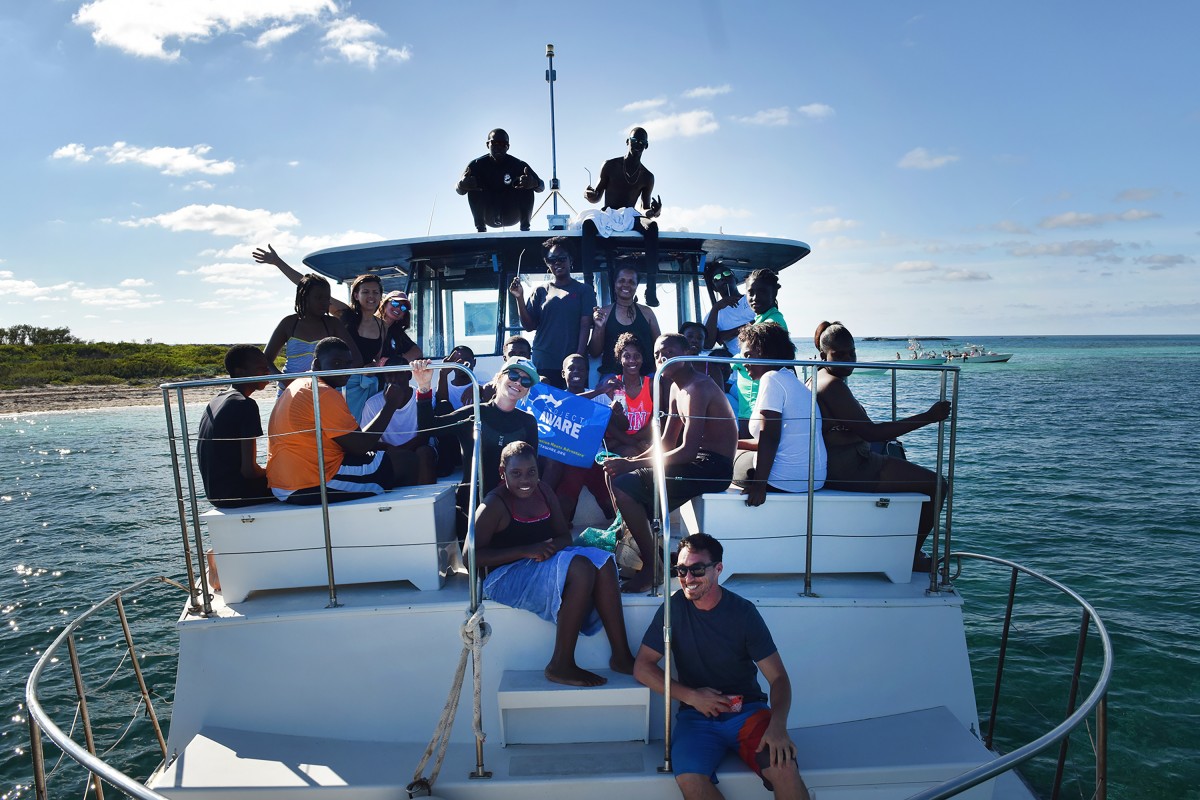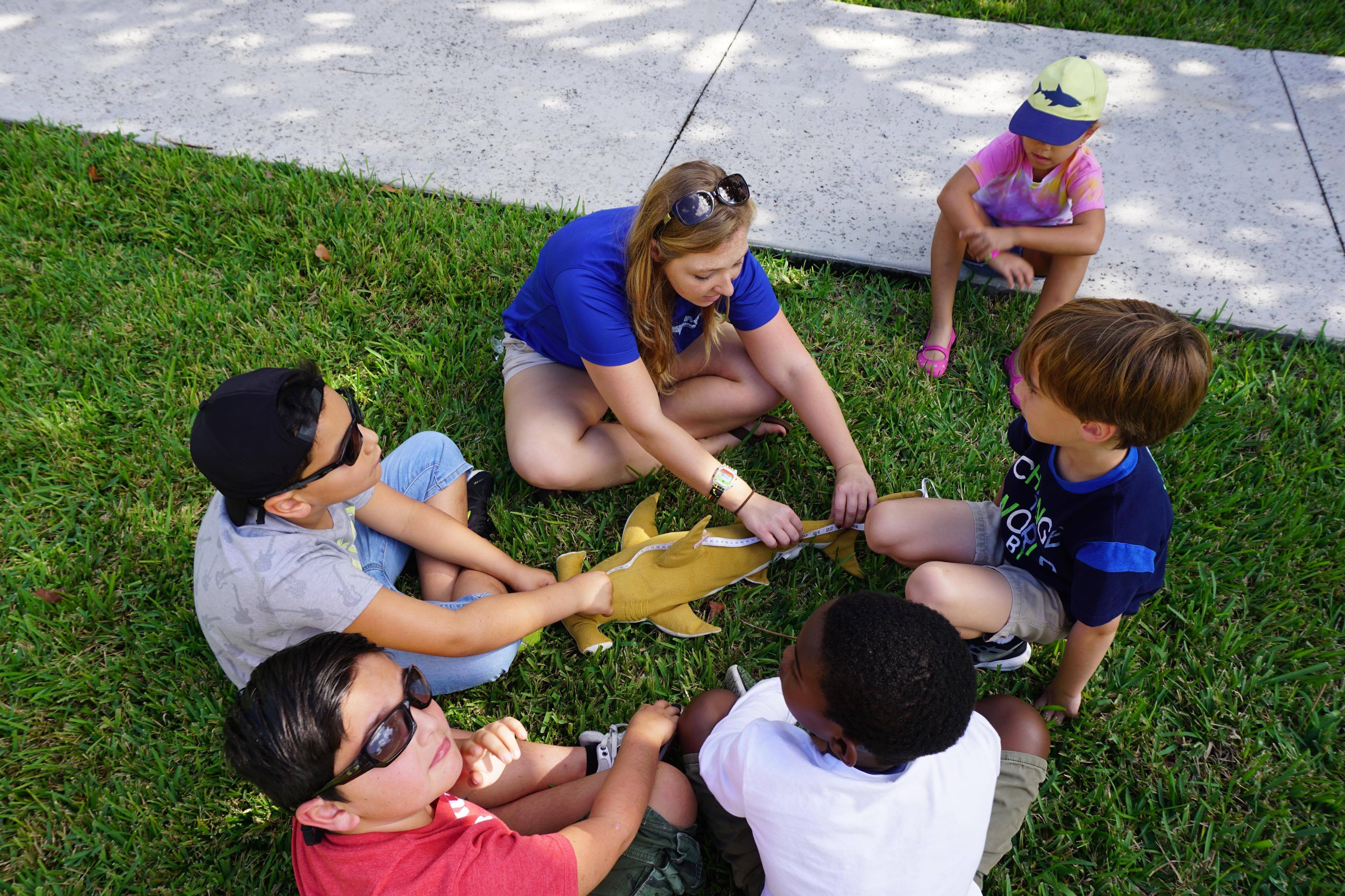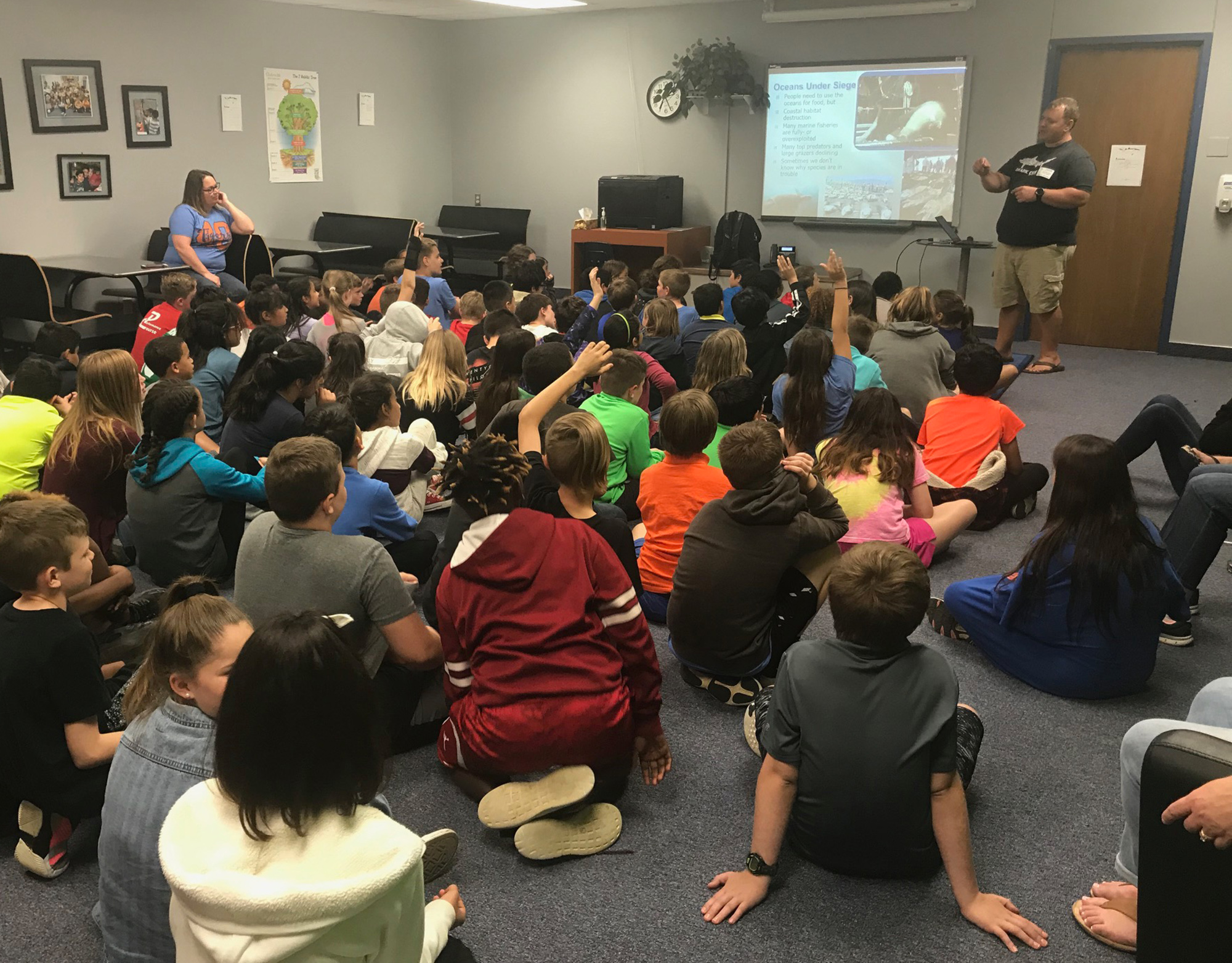The Next Generation of Shark Advocates
A Q&A with Sharks4Kids Founder & President, Jillian Morris

This Shark Week, we catch up with our friend and conservation partner Jillian Morris to talk about engaging young people in shark conservation. Jillian’s organization - Sharks4Kids - brings together scientists, educators, conservationists, and professional videographers to create a unique opportunity for the next generation to learn why sharks need kids and kids need sharks.
What motivated you to start Sharks4Kids?
I honestly believe kids can make a difference and I want to inspire and empower them to do so. They have a voice and they can be heard. I wanted to give teachers and students access to facts. I also wanted students to see real people around the world working with sharks. I want them to meet divers, scientists, artists, writers, educators, and conservationists who are all using their skills to save sharks.

In your experience, what perception do children have of sharks?
It really depends but, sadly, a lot of students are afraid of sharks whether they live near the ocean or not. They have learned a lot of misinformation from TV, the internet or adults in their life. The great thing about kids though, they want to learn. I love seeing them get excited when I show videos and images. It’s amazing how quick their perception can change when they see facts instead of fear.
“Wow, is that you in the video?”
I love this response. I especially love sharing my images and videos with young girls. I want them to see that shark diving, shark science and cameras are for them too.
I do also meet a lot of kids who love sharks. They want to show me their shark shirt or book and it’s amazing. They inspire me. This is why I created Sharks4kids and why I do this work.
What activities do Sharks4Kids run?
We offer a wide range of opportunities for students both in the field and in the classroom. During our classroom visits and at outreach events we love to focus on hands-on learning activities like create your own shark or a variety of matching games. One of our favorite activities is a mock shark tagging where students collect data from a plush or blow up shark. They take all the same measurements we do when working with a real shark, even attaching a tag. It’s a great way for them to learn about shark science and how we study these amazing animals.
We also take kids in the Bahamas to see sharks, as the first-hand experience creates connections needed for conservation and awareness. The Bahamas is the ‘Shark Diving Capital of the World,” and in order to protect these healthy populations, we need kids to care about these animals. They are the future for sharks and the oceans, so creating those connections and understanding is critical. It’s also remarkable to see their fear change to fascination within minutes. It’s powerful and incredibly inspiring.
In Florida, we have partnered with the Guy Harvey Research Institute to take students out shark tagging. They participate in an ongoing research project and assist with all aspects of the fieldwork. They set the lines, pull in the lines and do the full workup of each shark. They measure, take DNA and take each animal before it is released. Through all our programs, the goal is to help students understand the importance of these animals and how they can help protect them.

What are your top tips for engaging children in shark conservation?
1. Get them excited about sharks. Sharks are awesome! There is so much more to these animals than fins and teeth. My favorite facts to share with students are.
- Some sharks can glow
- Baby lemon sharks have “belly buttons” ( umbilical scars)
- The Greenland shark can live over 400 years
2. Get them involved. If you are a diver, why not visit a school or library and share your experience with students. Let them see your dive gear and camera. If you are an educator, plan a field trip or have a scientist visit your classroom. You can also have your kids do a project about sharks; make a video, write a poem, create a poster. If students are engaged and feel part of something, they are far more likely to be active in conservation throughout their life.
3. Check out our activities, crafts, videos, and virtual lessons. We connect with students and teachers all over the world to help them learn about sharks and shark conservation. Dive in with us!

What actions can children take to protect Mako Sharks?
One of the best things kids and adults can do is to educate themselves. Learning the facts about an animal is the first step towards conservation. From there, kids can make a poster or video to share at school. They can also share facts with their friends and family. Makos are a fascinating animal ( fastest shark), so it’s important to get kids interested and excited about the cool things these sharks can do ( fastest shark, able to leap out of the water..etc).
Depending on age and where a student lives, they can also learn more about the seafood they are eating. What is it? How was it caught? Where was it caught? Making informed decisions about what we eat is really important. They can avoid mako shark and encourage friends and family to do the same.
No matter how young or old, there is always something we can do to make a difference.



